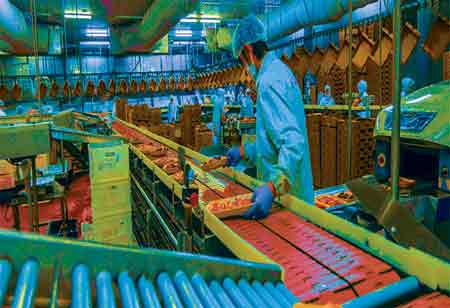THANK YOU FOR SUBSCRIBING
Be first to read the latest tech news, Industry Leader's Insights, and CIO interviews of medium and large enterprises exclusively from Food and Beverage Tech Review
How Does Gas Analysis Ensure Safe Food?
Food safety is crucial for consumers and the food industry, as it ensures food quality and prevents contamination.

By
Food and Beverages Tech Review | Friday, January 12, 2024
Stay ahead of the industry with exclusive feature stories on the top companies, expert insights and the latest news delivered straight to your inbox. Subscribe today.
Contamination can still occur despite measures, making gas analysis a valuable tool. The latest trends in gas analysis highlight the importance of addressing food contamination and ensuring food product safety.
Fremont, CA: Food safety is crucial for consumers and the food industry, as it ensures food quality and prevents contamination. Gas analysis is essential in packaging and processing to preserve food and keep it fresh. The choice of methods depends on factors like product type, shelf life, and intended use. Contamination can still occur despite measures, making gas analysis a valuable tool. The latest trends in gas analysis highlight the importance of addressing food contamination and ensuring food product safety.
The Role of Gas Analysis in Ensuring Food Safety
Gas analysis is a method that determines the composition and concentration of gases in food packaging and processing, identifying potential safety risks and optimizing food processing to extend shelf life. Oxygen promotes spoilage, while carbon dioxide inhibits it. Benefits include ensuring food products are safe, addressing hazards promptly, extending shelf life, reducing waste, and increasing efficiency. This technique is instrumental in food packaging and processing to prevent spoilage and maintain product quality.
Applications of Gas Analysis in Food Packaging and Processing
Gas analysis is crucial in food packaging and processing for shelf-life testing, detecting spoilage and contamination, and optimizing processes. It helps food producers determine the optimal conditions for a product, such as extending the shelf life of fresh produce like berries and lettuce. Gas analysis also helps detect harmful bacteria or contaminants that can lead to spoilage or foodborne illness. Furthermore, it helps identify areas for efficiency improvement, such as optimizing the baking process for bread and other baked goods. Food producers need gas analysis to ensure the quality and safety of their products.
Emerging Trends in Gas Analysis for Food Safety
Gas analysis technology has significantly improved food safety and quality in recent years. Advancements in portable devices, real-time monitoring, machine learning, and AI have made it easier for food manufacturers to monitor and analyze product quality on the go. Real-time monitoring allows for immediate detection of product issues, preventing contamination or spoilage. AI and machine learning are transforming food safety by
Analyzing vast amounts of data in real-time and uncovering patterns and trends humans might miss.
Social and Ethical Implications of Gas Analysis in Food Safety
Gas analysis is crucial for food safety, but it raises social and ethical concerns. It may increase packaging waste by requiring more material to maintain gas composition and contribute to the use of harmful chemicals and additives in food production. These substances prevent spoilage and maintain product quality, posing potential consumer risks.
I agree We use cookies on this website to enhance your user experience. By clicking any link on this page you are giving your consent for us to set cookies. More info


However, if you would like to share the information in this article, you may use the link below:
https://www.fbtechrevieweurope.com/news/how-does-gas-analysis-ensure-safe-food-nwid-1746.html





